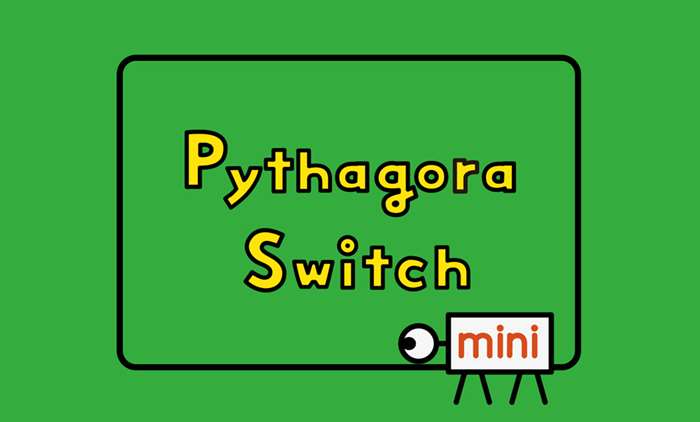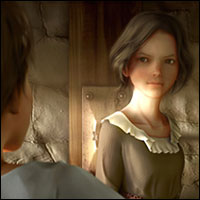
Pythagora Switch is a children’s educational broadcast on NHK. It’s a strange, surreal program that runs for 5-15 minutes. Pythagora Switch refers to how the segment uses a Rube Goldberg machine or, for my British readers, a Heath Robinson contraption to reveal a segment of the show’s title. Within the run time, the show offers various “corners” that show how the world functions, physics principles, and other concepts. It uses stop-motion animation for much of this.
Stop motion ranges from moving common objects to animating foil into shapes. These demonstrations also explain how “A human can do it!” by stepping kids through photographing the keyframes of the demonstration. Often the animations come off as surreal, such as creating creatures out of ordinary objects being brought to life. Aluminumfoilips is an impressive stop motion animation.
Pythagora Switch sometimes appears before NHK newscasts.

As an American, the broadcast’s focus on trying things and experimenting strikes me as interesting. It doesn’t pressure to achieve the right answer, although the Japanese education system is notorious for its testing. Instead, the show tries to encourage lateral thinking through its use of illusions, stop motion, and other animations. Common objects take on a different perspective. Lateral thinking seems rare in adults, judging by what I’ve observed at my library and my years working retail. For example, consider this classic challenge:
You are given a box of matches, a candle, and a pair of tacks. Your problem: attach the candle to the wall and light it so you can read your book near it.
Can you come up with the solution? You can tack the candle to the wall just fine, but what happens after it burns too low? It will fall and catch your book on fire. Not to mention the wax will drip and make a mess. When I asked patrons this question–and some library patrons come in looking for riddles–few can think of the solution.
What’s the answer?
Dump the matches out of the box, tack the matchbox to the wall, and place the candle in the box.
Lateral thinking involves thinking past the conceptional ideas we hold about objects and instead considering their properties. Foil can animate into dinosaurs and people. A matchbox can hold more than matches. A pythagora switch builds on lateral thinking, looking at objects as a means to move toward a goal. Such thinking attempts to observe an object or idea past its standard conceptual framework and use them in face-palm obvious ways after you see the object in action, such as the matchbox. However, at the time our concept of the object gets in the way.

Zen stresses this way of thinking, of looking beyond our concept or label. Its goal is to see reality as it is, seeing beyond dualistic/nondualistic thinking and noticing the true here-and-now. Objects and people are neither this nor that. Rather, they independently arise based on their properties, our conceptualization, our non-conceptualization, and all other inputs in a given moment. To put it simply, Zen seeks to see an object or a person as it is in addition to being aware of our inevitable view of that person or object. It sees the matchbox as a matchbox (concept), a box to hold things (a property), a composition of cardboard and ink, and our judgments toward it (as useful, scary, neutral, etc). Zen thinking is applied meta-awareness, awareness about our awareness.
Let’s come back down from that. Pythagora Switch doesn’t get into such abstractions. It’s a simple kids’ educational show that seeks to encourage them to think a little differently. However, all of these higher level abstractions are present in how it seeks to show common items in a different, entertaining way. Any time we break out of labeled conceptual thinking, we touch on Zen’s aim of observing and moving beyond a world that exists only within our minds. For Christians like me, that means trying to see God as He presents himself through creation and Scripture and not as I project Him to be. And this requires getting beyond either/or thinking.
Ahem, sorry. I went back into the abstract. Pythagora Switch strikes me as strange as an American who grew up in a different educational environment. I didn’t watch Sesame Street; I read books instead of watching educational television. Pythagora Switch‘s strangeness makes me reconsider my views of educational programming. Other NHK shows like Gatten and Muscles for Everyone strike me as charming and grating and funny with how they encourage and seemingly speak down to viewers. Again, those are my projections and cynicism at work. And I’m grateful for these programs for making me aware of my judgments. There’s only a few NHK broadcasts I watch regularly: the news, Hometown Stories, Core Kyoto, Japanology+, sumo, and NHK Documentaries. But I see filler segments like Pythagora Switch while I wait. They often challenge my American sensibilities; after all, the American way of presenting ideas, particularly all the recent edginess, isn’t the only way to present concepts.
Well, that is a lot of philosophy and navel gazing to squeeze out of a 15 minute children’s show. I hope my navel gazing has helped you consider your own viewpoints. Sometimes it helps me to see another person’s reflections to help me see my own erroneous thinking. Lessons and challenges to perspective often come from unlikely sources, such as Pythagora Switch.



